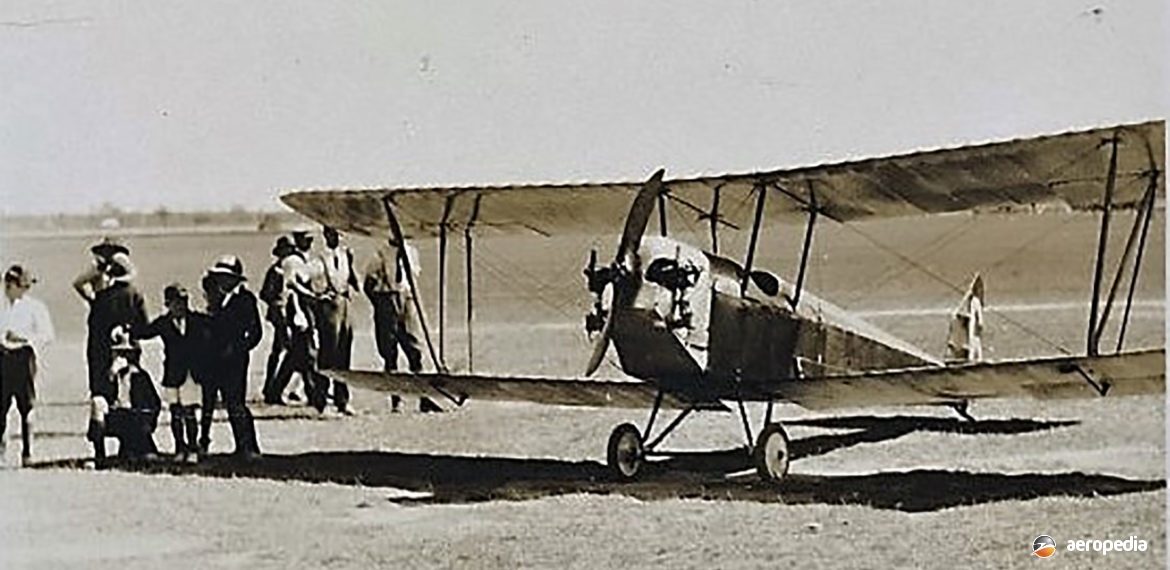Photograph:
Broadsmith B.4 Biplane at Richmond, NSW in 1924 (pic.vn4773992-v 01)
Country of origin:
Australia
Description:
Single-seat light biplane
Power Plant:
One 25 kw (33 hp) [1,204-cc] ABC Scorpion two-cylinder horizontally-opposed air-cooled engine
Specifications:
- Wingspan (upper): 7.49 m (24 ft 6 in)
- Wingspan (lower): 6.67 m (21 ft 9 in)
- Length: 5.66 m (18 ft 6 in)
- Wing area: 13.28 m² (143 sq ft)
- Max speed: 107 km/h (66.8 mph)
- Max altitude reached: 2,149 m (7,050 ft)
- Landing run: 109 m (358 ft)
- Empty weight: 177 kg (390 lb)
- Loaded weight: 268 kg (590 lb)
History:
The Broadsmith B.4 Biplane was one of a series of aircraft designs entered in the 1924 light aircraft competition held at Richmond, NSW. Designed by H E Broadsmith, the B.4 was built and flown at the meeting by well known Australian pilot and designer, Captain Edgar W Percival. The aircraft was a braced biplane with a smaller lower wing. The fuselage was three-ply covered. By the time of the meeting the aircraft had only just been completed and there had not been enough time to tune the engine. An experimental propeller was used, this not allowing the engine to run at more than 2,500 rpm.
The Broadsmith B.4 was the most successful design at the meeting, winning prizes for altitude, reliability, landing, take-off, and fuel consumption. Apart from winning the competition, the aircraft had many good points in its favour and the official report stated the aircraft was very rigid and strongly built, and with the engine well-tuned, could be safely used on cross-country flights. The taxiing qualities of the machine were good and the run to get off was quite good. With careful handling the machine could be landed in a comparatively small field. The climb was good and, although the highest altitude reached in the competition was 2,286 m (7,050 ft), the machine was still climbing strong when the petrol supply ran out.
The report concluded “Although this machine won the petrol consumption prize, the performance was poor, due to the fact that the carburettors were not adjusted and further the vibration of the engine caused excessive flooding, and in flight resulted in great loss of petrol. All the detrimental features that developed during the competition are being rectified, a new propeller is being designed, and it can safely be expected that the performance will be considerably improved.”
Finally the report said: “Of all the locally designed machines at the meeting, the Broadsmith biplane on performance proved to be the only reliable type which could with slight modification be used to advantage for commercial purposes. The undercarriage clearances were good, the landing and climbing qualities were good, and she had plenty of reserve power.”

